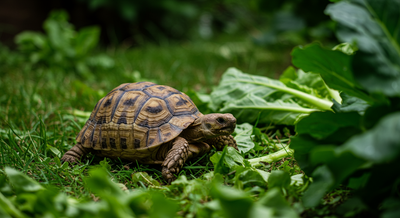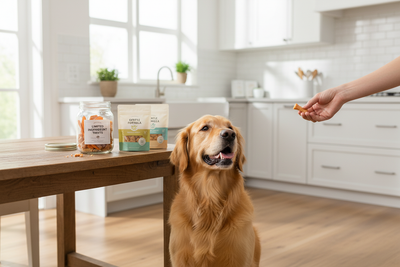
Choosing the Right Reptile Tank.
Choosing the right reptile tank is crucial for the well-being of your scaly companion. From size to material, various factors play a role in creating a suitable habitat. Understanding the specific needs of your reptile species is the first step in this process. Factors such as temperature requirements, space for movement, and humidity levels all influence the type of tank that will best suit your pet. Additionally, considering future growth and potential habitat modifications is essential to ensure a long-term housing solution. In this guide, we will explore the key considerations to keep in mind when selecting a reptile tank, providing you with the knowledge needed to create a comfortable and safe environment for your reptilian friend.
Creating the Ideal Reptile Tank Environment
Reptiles are fascinating creatures that require a carefully curated environment to thrive. One of the key aspects of providing for your scaly friend is creating the ideal tank environment. This involves managing humidity levels and temperature requirements to mimic their natural habitat.
Managing humidity levels and temperature requirements:
Reptiles come from diverse habitats, ranging from tropical rainforests to arid deserts. It's crucial to research your specific reptile's needs to ensure you provide the right humidity levels and temperature gradients within the tank. Maintaining proper humidity is essential for shedding, hydration, and overall health. Utilizing a quality hygrometer and misting system can help achieve and monitor the desired humidity levels. Additionally, creating thermal gradients by using heat sources like ceramic heat emitters or heat pads is vital to allow your reptile to regulate its body temperature effectively.
Selecting the appropriate substrate for the tank:
The substrate plays a vital role in maintaining humidity levels and providing a comfortable surface for your reptile. Different reptile species have varying substrate preferences, so choose wisely to promote natural behaviors and easy maintenance. For tropical species, coconut coir or cypress mulch can be excellent choices due to their moisture retention properties. In contrast, desert species may benefit from sand or reptile carpet that allows for burrowing and heat absorption. Always ensure the substrate is clean, non-toxic, and free of impurities to prevent health issues.
Emphasizing the importance of proper heating needs:
Reptiles are ectothermic, meaning they rely on external heat sources to regulate their body temperature. Invest in quality heating elements such as heat lamps or heating pads to create warm basking spots and cooler retreat areas within the tank. Monitoring temperatures with thermometers placed at different levels of the tank is crucial to prevent overheating or chilling. Providing a temperature gradient allows your reptile to self-regulate its body temperature by moving between warmer and cooler areas.
Discussing the role of substrate in temperature control and comfort:
Aside from humidity regulation, the substrate also aids in temperature control. Some substrates retain heat better than others, influencing the overall thermal gradient in the tank. Consider how your chosen substrate affects both temperature and comfort for your reptile. Naturalistic substrates like soil or moss not only help in maintaining humidity but also provide a soft surface for reptiles to walk on and burrow in, mimicking their natural habitat.
By focusing on these key points and tailoring the tank environment to your reptile's specific needs, you can create a safe, comfortable, and enriching space for your scaly companion. Remember, regular monitoring, proper maintenance, and adjustments based on your reptile's behavior are essential for ensuring a thriving and happy pet.
Choosing the Right Tank Size
When it comes to setting up a habitat for your reptile, selecting the right tank size is crucial. A tank that is too small can have negative impacts on your pet's well-being. It can restrict movement, limit exercise, and lead to stress and health issues. On the other hand, a tank that is too large might make your reptile feel exposed and vulnerable, causing unnecessary stress. Therefore, finding the right balance is essential to create a comfortable environment where your reptile can thrive. An inadequate tank size not only affects the physical health of your pet but can also impact its mental well-being. By providing a properly sized tank, you can ensure that your reptile has enough space to move around, explore, and exhibit natural behaviors, ultimately promoting a healthier and happier life for your scaly friend.
In addition to the physical and mental well-being of your reptile, the tank size also plays a significant role in maintaining proper environmental conditions. A tank that is too small can lead to poor air circulation and inadequate heat gradients, which are essential for reptiles to regulate their body temperature effectively. Conversely, a tank that is too large may result in difficulty maintaining consistent temperature and humidity levels throughout the enclosure. This can create discomfort for your reptile and increase the risk of respiratory infections and other health issues.
When choosing the right tank size, consider the specific needs of your reptile species. Some reptiles, such as arboreal species like chameleons, require vertical space for climbing and perching, while others, like terrestrial species such as bearded dragons, need more floor space to move around. Research the adult size and habitat requirements of your reptile to determine the appropriate tank dimensions.
Furthermore, a properly sized tank allows for the inclusion of enrichments such as hiding spots, basking areas, and environmental stimuli. These enrichments are essential for promoting natural behaviors, reducing stress, and preventing boredom in captive reptiles. By providing a well-equipped and adequately sized tank, you can create a stimulating environment that supports your reptile's physical, mental, and emotional well-being.
Choosing the right tank size is a critical aspect of responsible reptile ownership. It directly impacts your pet's health, behavior, and overall quality of life. By investing time and effort into selecting an appropriate tank size and designing a suitable habitat, you can ensure that your reptile thrives in captivity and enjoys a fulfilling existence as part of your family.
Reptile Housing: Choosing the Right Enclosure
When it comes to providing a suitable habitat for your reptile companion, understanding the nuances of different types of tanks and enclosures is crucial. Let's explore the world of reptile housing in more detail to help you make an informed decision that caters to your pet's specific needs.
Terrariums vs. Vivariums
Terrariums and vivariums are the two primary options for housing reptiles, each designed to meet distinct environmental requirements. Terrariums are well-suited for species that thrive in arid conditions, offering a habitat that replicates their natural dry environment. On the other hand, vivariums are more suitable for reptiles that require higher humidity levels, such as tropical species. By selecting the appropriate type of enclosure, you can create a habitat that supports your reptile's health and well-being.
Tank Materials
In addition to considering the type of enclosure, the material of the tank plays a significant role in providing a comfortable living space for your reptile.
- Wood Tanks : Valued for their insulation properties, maintaining a stable environment for your pet. Require regular upkeep to prevent moisture-related issues.
- Glass Tanks : Provide excellent visibility, allowing for easy observation of your reptile. Can be heavy and prone to breakage.
- PVC Tanks : Lightweight and easy to clean, making them a popular choice among reptile owners. May not retain heat as effectively as other materials.
Choosing the Right Supplier
When selecting a tank for your reptile, it's essential to ensure that the supplier you choose prioritizes animal welfare and offers a diverse range of high-quality products. Opt for stores with knowledgeable staff who can provide expert advice on selecting the best habitat for your pet. By investing in top-notch tanks and accessories, you can create a secure and cozy environment that meets your reptile's specific needs.
Conclusion
Whether you decide on a terrarium or vivarium, it's crucial to choose a material that aligns with your pet's requirements and to purchase from a reputable supplier. This ensures that your scaly friend not only survives but thrives in its new home, enjoying a safe and enriching environment that supports its overall well-being.
Choosing the Right Reptile Tank
Choosing the right reptile tank for specific species is a critical aspect of responsible reptile ownership. Each reptile species has unique requirements that must be met to ensure their health, happiness, and overall well-being in captivity. When considering the type of tank for your reptile, factors such as size, shape, ventilation, and security features all play a crucial role in creating a suitable habitat.
Tank Requirements for Ball Pythons
Ball pythons, known for their docile nature, require a tank that allows them to fully stretch out. A tank with appropriate length and width dimensions is essential to mimic their natural environment and promote healthy movement. Additionally, providing a secure lid is vital as ball pythons are notorious escape artists.
Tank Requirements for Hognose Snakes
On the other hand, hognose snakes, with their burrowing behavior, thrive in tanks with more horizontal space rather than vertical height. Ensuring the tank setup accommodates their natural behaviors is key to their well-being.
Consider Adult Size and Tank Dimensions
As reptiles grow, their tank requirements evolve. It's crucial to consider the adult size of the reptile when selecting a tank to avoid the stress of frequent upgrades. By choosing the right dimensions from the beginning, you can provide a stable environment for your pet.
Bedding Materials
Bedding materials are another essential consideration when setting up a reptile tank. For instance, bearded dragons require loose substrates like sand or soil for burrowing, while leopard geckos prefer flat surfaces to prevent injury. Using the correct bedding material is crucial in preventing health issues such as impaction.
Tank Material, Ventilation, and Security
When selecting a tank for your reptile, consider not only the current size of your pet but also its potential growth. Proper ventilation is crucial to maintain air quality and regulate humidity levels within the tank. Security features such as sturdy locks or weighted lids are essential, especially for escape-prone species.
Lighting and Environmental Enrichment
Lighting is another critical aspect to consider when setting up a reptile tank. Different reptile species have varying lighting requirements, including UVB lighting for proper calcium absorption and heat lamps for thermoregulation. Enriching the tank environment with hiding spots, climbing branches, and other accessories can promote natural behaviors and mental stimulation for your reptile.
By carefully selecting and setting up the right tank for your reptile species, you are not just providing them with a home but a thriving ecosystem that supports their health and happiness.
Selecting the right reptile tank for your pet is crucial for their well-being and happiness. By considering factors such as size, material, and accessories, you can create a comfortable and safe environment for your reptilian companion. To explore a diverse range of habitats, ornaments, and supplies tailored for reptiles and amphibians, visit the webpage for. Zilla Micro Reptile and Amphibian Habitats Arboreal On Talis US. This platform offers a variety of high-quality products to meet the specific needs of reptile owners. Ensure your pet's comfort and happiness by choosing the perfect tank today!.
Visit. Zilla Micro Reptile and Amphibian Habitats Arboreal For a wide selection of top-notch reptile habitats and supplies.




